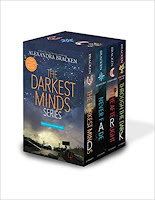I see a lot of questions about how many POVs a book should have and how to successfully transition through them. So when I began Deborah Crombie's latest book, A Bitter Feast, I decided to outline the POV shifts. When I analyze a mystery, I usually note the clues and suspects and how the finger is pointed, but this is a new release so I didn't want to give away any spoilers.
For my personal taste, I didn't feel all the POVs in this book were necessary. I prefer to stick with the investigators
solving the crime. In this case the actual police did very little sleuthing.
I'm not really a fan of witness or killer POVs, much less random ones. That said, other than some skimming, I thoroughly enjoyed this entry in
the series and will continue to eagerly await Deborah Crombie's books as they
are released.
The following is the list of scenes and chapters and the name of the POV character.
You can read the book to follow the clues and determine for yourself if you
liked the number and variations on POV and frequent scene cuts. I find analyzing other authors' work to be a great learning tool.
Setup: Scotland Yard detectives Gemma James, Duncan Kincaid, and their kids Kit, Toby, and Charlotte are headed to a country home weekend in the aptly named The Slaughters in the Cotswolds. The home belongs to co-worker Melody Talbot's parents (Addie and Ivan Talbot). Co-worker Doug Cullen is also attending. Duncan is dragged into the first murder via a car accident which causes him to be in less than top shape. The local DI quickly decides Duncan isn't a suspect, nor are the occupants or guests of the manor home. Because Duncan, Gemma, Melody, and Doug are police, he allows their involvement. Improbable, but I ran with it because I love the characters.
Chapter 1Scene 1: Vivian Holland (potential perpetrator) a chef providing the
luncheon to gain publicity for her restaurant.
Scene 2: Nell Greene (second victim along with Fergus O'reilly first
victim)
Scene 3: Gemma James
Scene 4: Duncan Kincaid
Scene 5: Nell Greene
Scene 6: Duncan Kincaid
Chapter 2
Scene 1: Duncan Kincaid
Scene 2: Vivian Holland
Scene 3: Duncan Kincaid
Chapter 3
Scene 1: Gemma James
Scene 2: Duncan Kincaid
Scene 3: Mark Cain (secondary character) local farmer
Scene 4: Ibby Azoulay (potential suspect)
Chapter 4
Scene 1: Vivian Holland
Scene 2: Duncan Kincaid
Scene 3: Gemma James
Scene 4: Vivian Holland
Scene 5: Duncan Kincaid
Scene 6: Gemma James
Chapter 5
Scene 1: Duncan Kincaid
Scene 2: Mark Cain
Scene 3: Gemma James
Scene 4: Duncan Kincaid
Chapter Six
Scene 1: Gemma James
Scene 2: Vivian Holland backstory time shift
Scene 3: Doug Cullen
Scene 4: Duncan Kincaid
Chapter 7
Scene 1: Bea Abbott (witness)
Scene 2: Gemma James
Scene 3: Melody Talbot
Scene 4: Kit (Gemma and Duncan's son)
Chapter 8
Scene 1: Duncan Kincaid
Scene 2: Melody Talbot
Scene 3: Duncan Kincaid
Scene 4: Gemma James
Chapter 9
Scene 1: Duncan Kincaid
Scene 2: Melody Talbot
Scene 3: Vivian Holland
Scene 4: Vivian Holland backstory time shift
Chapter 10
Scene 1: Kit
Scene 2: DI Booth
Scene 3: Duncan Kincaid
Scene 4: Joe (works at Talbot's house, gardener)
Chapter 11
Scene 1: Gemma James
Chapter 12
Scene 1: Gemma James
Scene 2: Duncan Kincaid
Scene 3: Duncan Kincaid
Chapter 13
Scene 1: Vivian Holland backstory time shift
Scene 2: Gemma James
Scene 3: Joe
Scene 4: Vivian Holland
Scene 5: Melody Talbot
Scene 6: Jack (bartender, becomes third victim)
Chapter 14
Scene 1: Mary Thompson (tertiary Character)
Scene 2: DI Booth
Scene 3: Melody Talbot
Scene 4: Gemma James
Chapter 15
Scene 1: Duncan Kincaid
Scene 2: Gemma James
Scene 3: Duncan Kincaid
Chapter 16
Scene 1: Melody Talbot
Scene 2: Kit
Scene 3: Duncan Kincaid
Scene 4: Gemma James
Chapter 17
Scene 1: Duncan Kincaid
Scene 2: Vivian Holland backstory time shift
Chapter 18
Scene 1: Gemma James
Scene 2: Melody Talbot
Scene 3: Gemma James
Scene 4: Roz (secondary character) Addie Talbot's secretary
Scene 5: Melody Talbot
Chapter 19
Scene 1: Gemma James
Scene 2: Melody Talbot
Scene 3: Kerry Boatman (investigator in London)
Chapter 20
Scene 1: Vivian Holland backstory time shift
Scene 2: Melody Talbot
Scene 3: Duncan Kincaid
Scene 4: Kerry Boatman
Chapter 21
Scene 1: Vivian Holland backstory time shift
Scene 2: Melody Talbot
Scene 3: Gemma James
Scene 4: Vivian Holland
Scene 5: Melody Talbot
Chapter 22
Scene 1: Duncan Kincaid
Scene 2: Melody Talbot
Scene 3: Kerry Boatman
Scene 4: Vivian Holland backstory time shift
Chapter 23
Scene 1: Duncan Kincaid
Scene 2: Melody Talbot
Scene 3: Gemma James
Scene 4: Duncan Kincaid
Scene 5: Vivian Holland backstory time shift
Scene 6: Gemma James
Scene 7: Duncan Kincaid
Chapter 24
Scene 1: Duncan Kincaid
Scene 2: Grace Holland (Vivian Holland's daughter)
Scene 3: Gemma James
Scene 4: Kit
Chapter 25
Scene 1: Vivian Holland backstory time shift
Scene 2: Gemma James
Scene 3: Duncan Kincaid
Scene 4: Melody Talbot
Scene 5: Vivian Holland
I picked up Mourn Not Your Dead, the fourth installment of the best-selling Gemma James & Duncan Kincaid mystery series by Deborah Crombie while browsing the shelves in a Barnes & Noble. Since I like to start at the beginning, I went back to titles 1, 2, and 3 then kept up from there. I fell in love with the characters instantly and each mystery is well crafted. Visit her website to check out her books: deborahcrombie.com . If you aren't familiar, I suggest buying all of them. It will make for a satisfying binge. I'd read them all again.
Further reading:
Dissecting Christie Part 2 of 6
Dissecting Christie Part 3 of 6
Dissecting Christie Part 4 of 6
Dissecting Christie Part 5 of 6
Dissecting Christie Part 6 of 6











